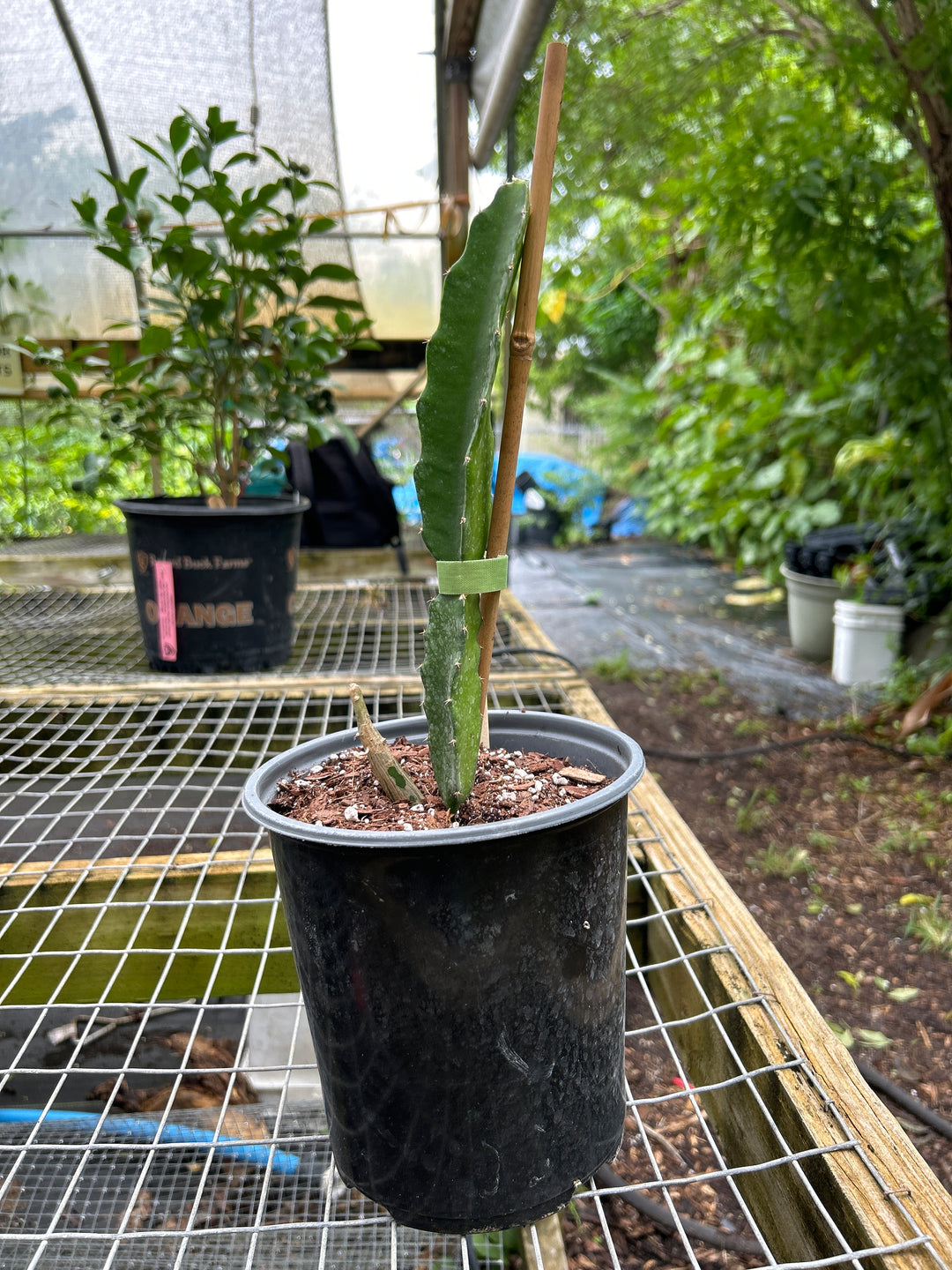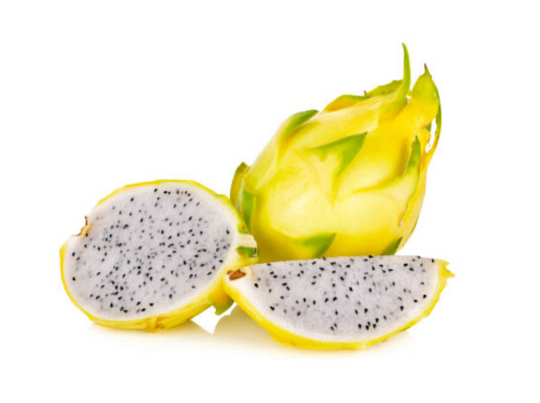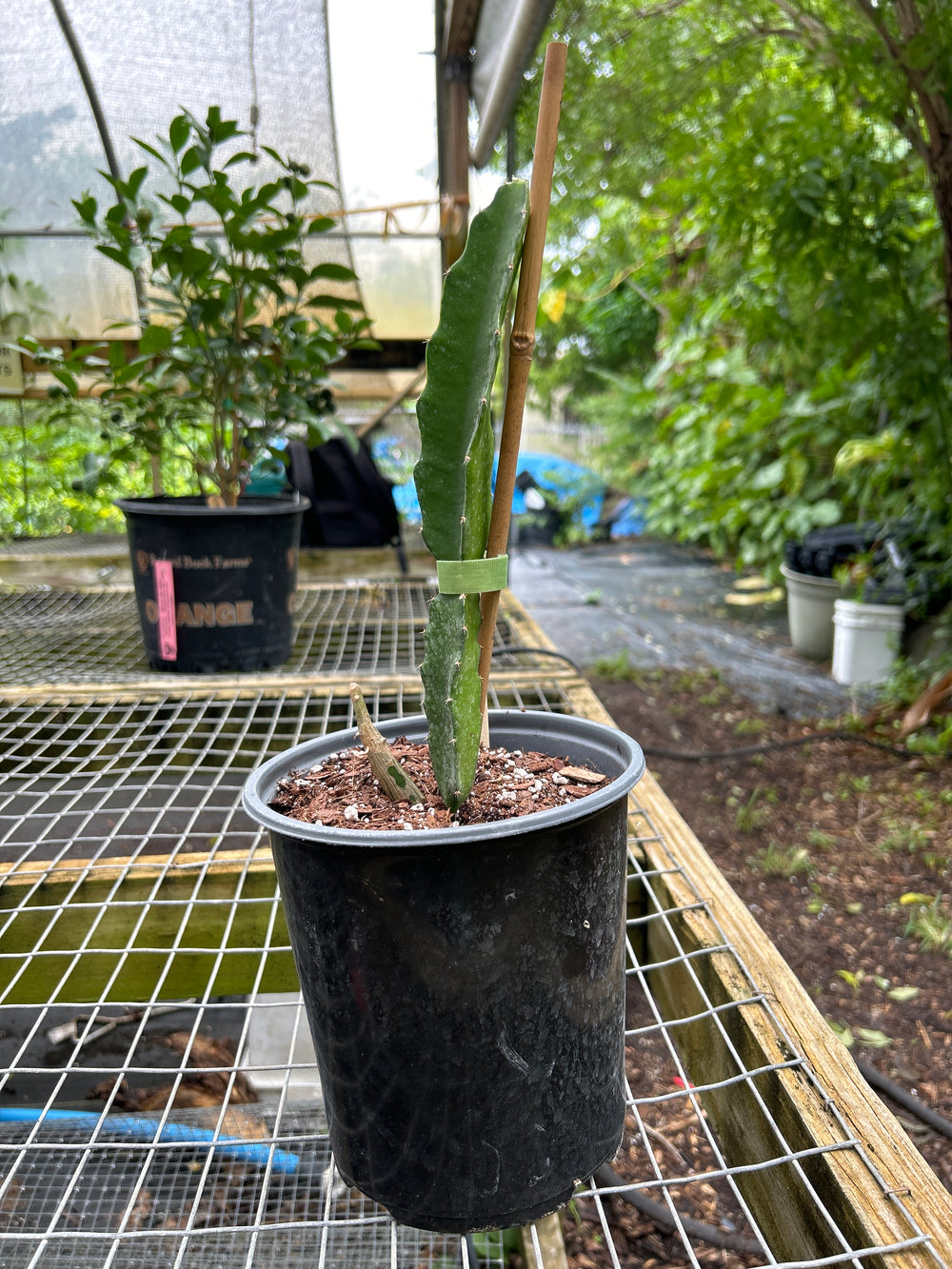Dragon fruit (yellow)
Dragon fruit, also known as pitaya, is a tropical fruit known for its vibrant pink skin and speckled flesh. It's part of the cactus family and requires specific care to thrive.
1. **Climate**: Dragon fruit prefers a warm climate, typically found in USDA zones 10-11. It can tolerate short periods of frost but thrives in temperatures between 65-80°F (18-27°C).
2. **Sunlight**: Needs full sun for optimal growth. Ensure it receives at least 6 hours of direct sunlight daily.
3. **Soil**: Well-draining soil is crucial. Sandy or loamy soil with a pH between 6 and 7 is ideal. Poor drainage can lead to root rot.
4. **Watering**: Dragon fruit cacti need moderate watering. Allow the soil to dry out between waterings. Overwatering can cause root rot.
Planting and Support
1. **Propagation**: Dragon fruit can be propagated from seeds or cuttings. Cuttings are more common and faster to fruit.
2. **Support Structure**: As a climbing cactus, it requires a trellis or support to grow upright. Use sturdy stakes or a trellis to support the plant's weight.
Care and Maintenance
1. **Fertilizing**: Use a balanced fertilizer during the growing season (spring and summer). Reduce feeding in the winter.
2. **Pruning**: Regular pruning helps maintain shape and encourages fruit production. Remove damaged or diseased branches.
3. **Pests and Diseases**: Watch for common pests like aphids and ants. Fungal diseases can also affect the plant, especially in humid conditions. Use appropriate organic or chemical treatments as necessary.
Harvesting
- Dragon fruit typically takes 27-30 days to mature after flowering. The fruit is ready to harvest when the skin color changes to bright pink or red, and the small leaf-like bracts on the fruit start to wither.
Additional tips
- Mulching around the base of the plant can help retain moisture and regulate soil temperature.
- Dragon fruit plants can be grown in containers, making them suitable for patios or small gardens.






